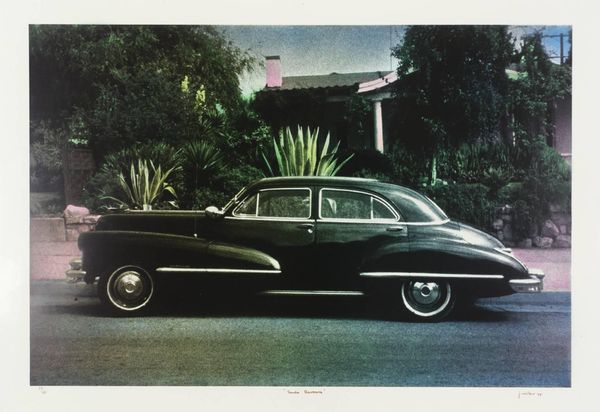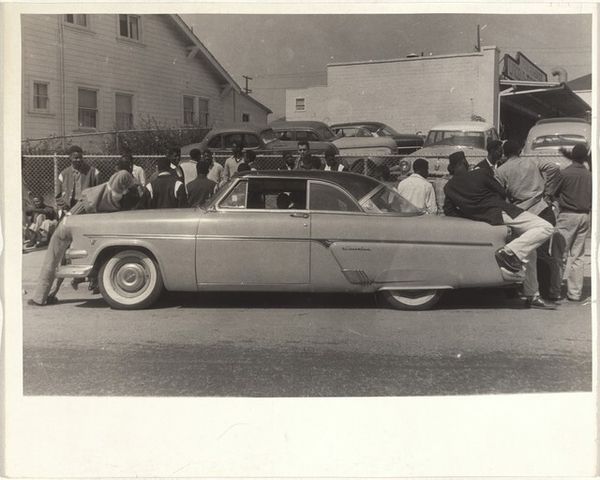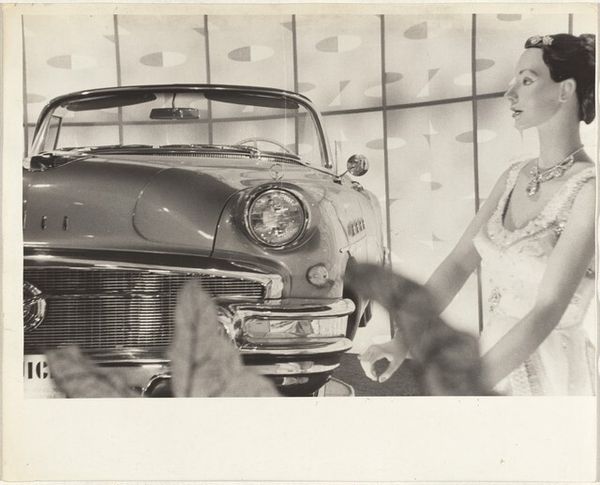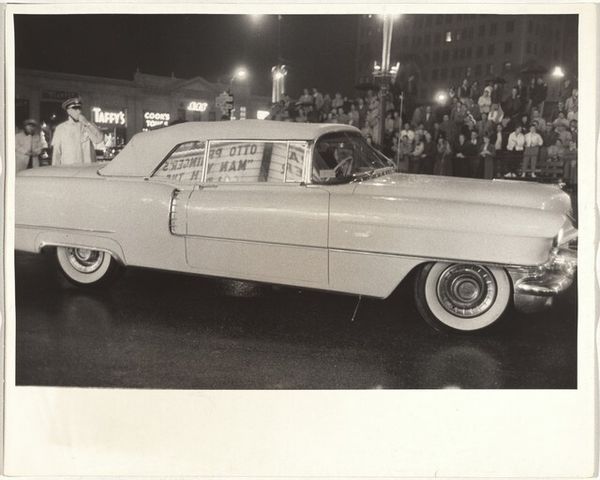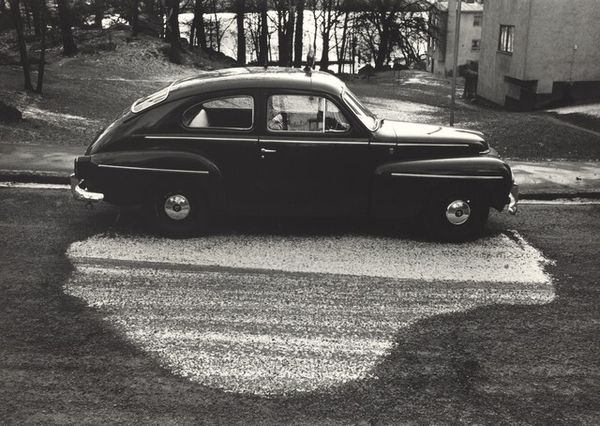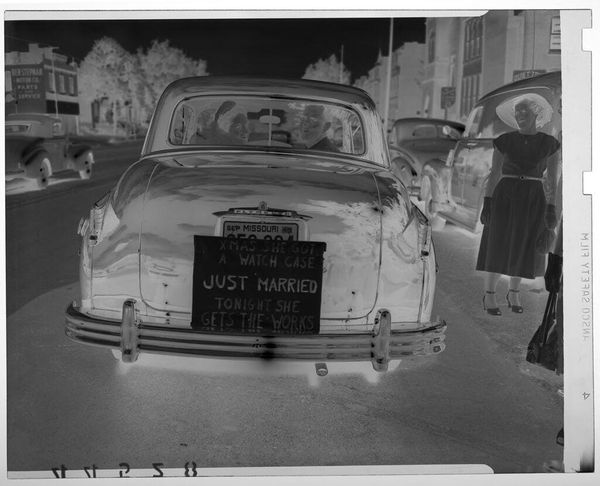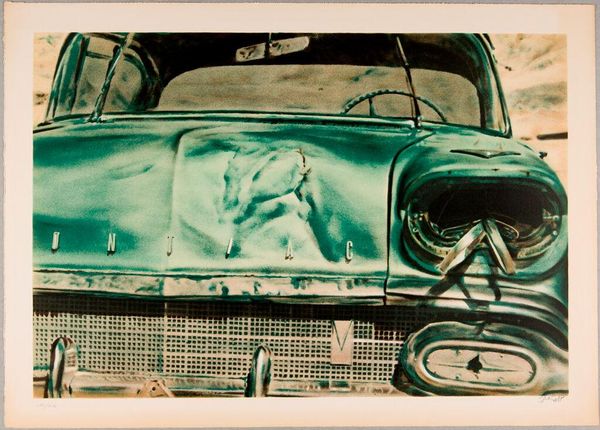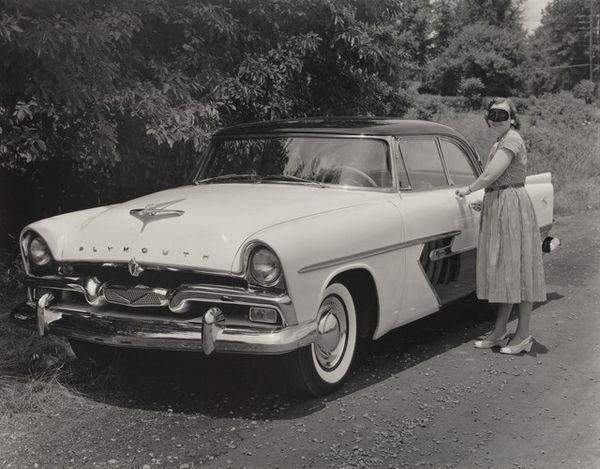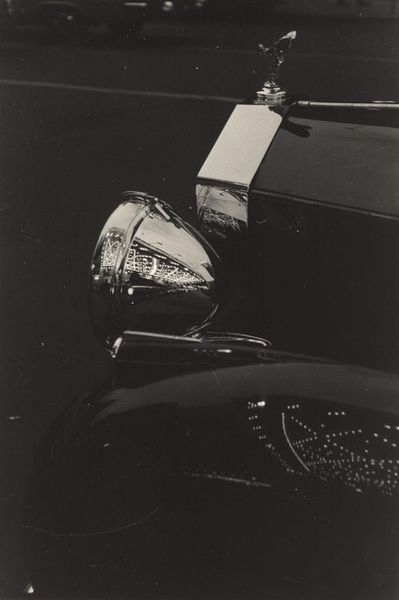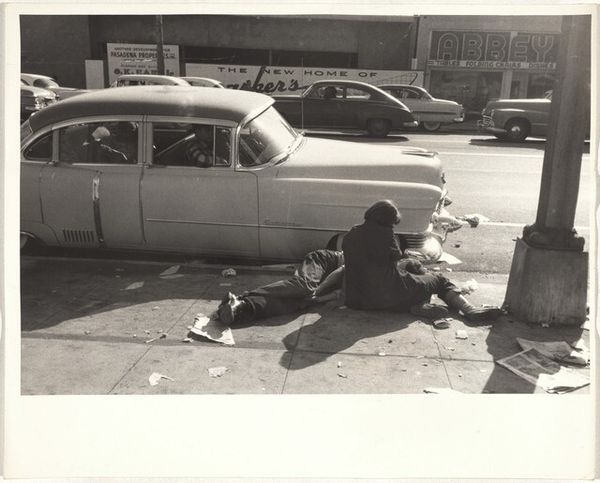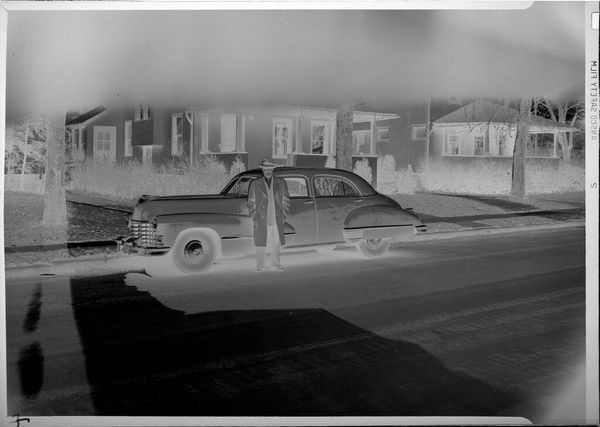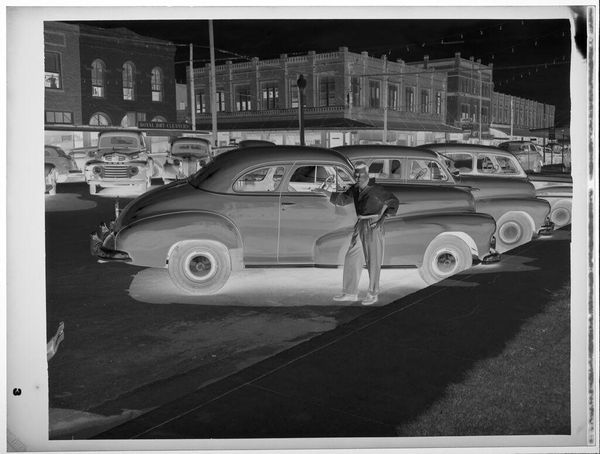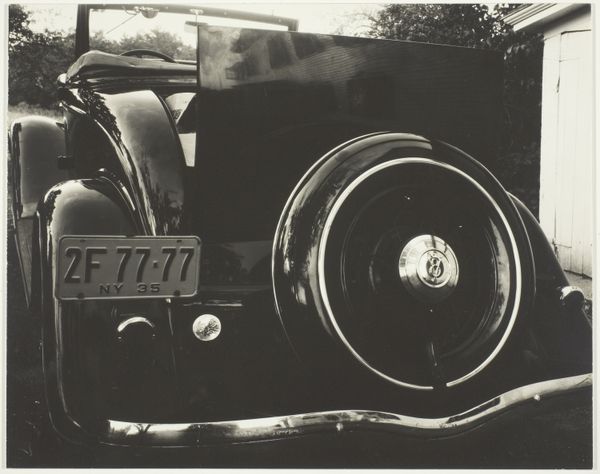
photography
#
portrait
#
still-life-photography
#
automotive
#
caricature
#
vehicle photography
#
landscape
#
car photography
#
automotive design photography
#
photography
#
pop-art
#
realism
Dimensions: image: 7.6 x 11.4 cm (3 x 4 1/2 in.) sheet: 8.9 x 12.7 cm (3 1/2 x 5 in.)
Copyright: National Gallery of Art: CC0 1.0
Editor: So, here we have "Mary Girow's Cadillac," a photograph from September 1956. There’s something about the color and the angle; it almost feels staged. It's like a faded dream of the American mid-century. What strikes you about this piece? Curator: What I see is an artifact deeply embedded in its historical context. The Cadillac, especially in that color, signifies a very particular aspirational ideal of 1950s America, right? Think about postwar prosperity, gender roles, and consumerism. Who do you think Mary Girow was? What does it mean to name the photograph after her instead of simply calling it "Cadillac"? Editor: That's a good point. The specificity of the title does feel like it’s making a statement, locating the car in someone’s personal narrative. Is this a critique of car culture and materialism? Curator: Possibly, but I see a more nuanced commentary. Whose narratives were prioritized and whose were erased? Think about the power dynamics implicit in owning such a vehicle in 1956. Was Mary part of that power structure, or outside it looking in? Also, what does the off-center composition suggest? Is it destabilizing that ideal? And that discarded cup on the ground introduces an element of waste or imperfection, which really jars with the clean lines of the Cadillac. Editor: So, it’s not just about the car as an object of desire, but about who gets to participate in that dream and at what cost. That tension between aspiration and reality seems to be central here. Curator: Exactly. It pushes us to consider whose stories get told and whose get overlooked in the broader narrative of American progress. By putting Mary’s name to it, there is almost an active, critical dialogue. Editor: I never would have thought of it that way! Now I see that it is way more layered and critical. Curator: Indeed! It’s about acknowledging that every object, especially one so loaded with symbolism, carries a complex story about power, identity, and belonging.
Comments
No comments
Be the first to comment and join the conversation on the ultimate creative platform.
